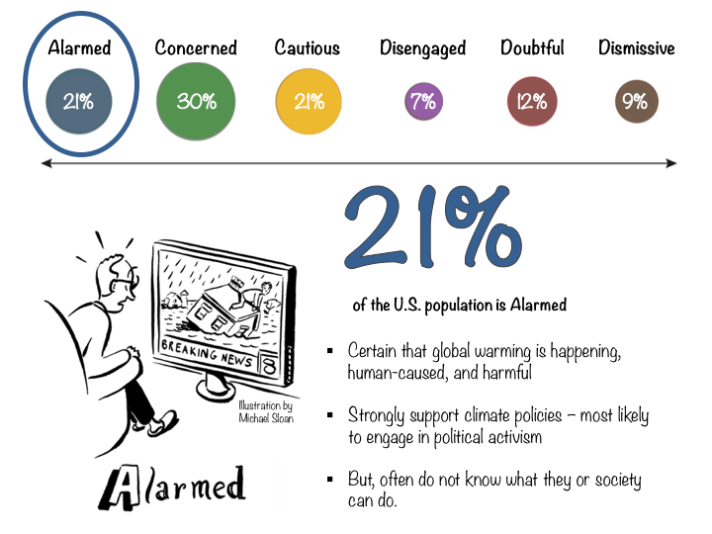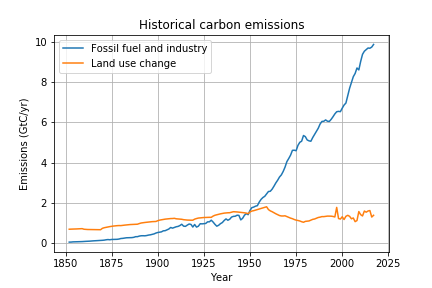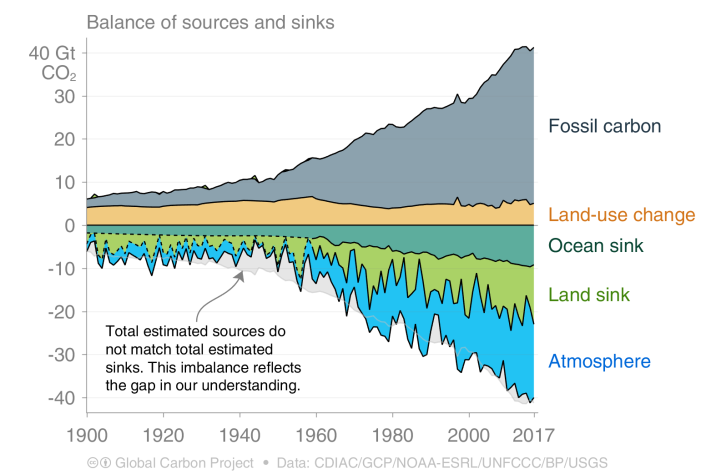The recent launch of the Green New Deal resolution marks a turning point in the politics of climate change in America. The plan is stunning in its ambition, putting us on a course towards a low-emissions, climate-resilient future with a massive 10 year mobilization of the nation’s resources. It also recognizes that such rapid changes would come with large societal costs, if safeguards aren’t put in place. You might think such an ambitious policy would lack public support, but it’s quite the opposite: polls have shown approval ratings above 80%.
The issue of climate change is more in the public eye in America than ever before. So with this update, we’ll change direction from describing the climate engine to talk a little about Flourish’s political engine: the equations and data behind public opinion in the game. The engine is fully predictive: it evolves in time, changing in reaction to player choices, random events, and climate. It also determines the actions that you’re able to take in your country. If your constituency doesn’t believe in global warming, they won’t allow you to make bold strides to solving the problem. We think the engine can help predict reactions to the Green New Deal and other climate policies as well.
The engine is heavily based on a series of studies by the Yale Program on Climate Change Communication called “Global Warming’s 6 Americas.” These studies suggest that Americans can be usefully separated into 6 different groups in terms of their beliefs about climate action. We summarize characteristics of the 6 groups below.
- Alarmed: who both accept the scientific consensus about human-caused global warming, and are already taking action to address the problem.
- Concerned: who accept the scientific consensus but have not yet started taking action themselves.
Note that alarmed and concerned now make up 59% of the country. Concern about global warming has risen substantially in recent years. These two categories made up only 43% of the public in 2013.

- Cautious: who lean towards accepting the science but don’t think it’s an urgent problem to address.
- Disengaged: who haven’t thought much about climate change, perhaps because they have bigger problems, because they don’t know about it, or because they don’t think about politics.
- Doubtful: who often believe that recent climate changes are natural and we’re already doing enough to solve the problem.
- Dismissive: who believe that climate change is a hoax, and actively try to convince others of their views.
Which of the 6 categories are you? Although I might wager that if you’re reading this you’re “alarmed,” you can take a 4 question quiz to find out. Here’s my result:

Who wants to be known as Alarmed though?? We’re trying to rebrand this group as “Woke”!
When the first 6 Americas study was released in 2009, I was most struck by how small the dismissive group is. Their intense interest in promulgating their views means they’re seen disproportionally in public debate, in comment sections of news articles, etc. But this group simply does not make up much of the public. Further, research has suggested that the dismissive group are unlikely to ever change their minds. So dismissives tend not to be worth your time to debate (unless others are listening)!
In Flourish, in every region, whether player- or AI-controlled, we keep track of the fraction of the population that falls into each of the 6 groups. The initial partitioning into these categories is based on polling data, from the Yale group or extrapolated from international surveys about climate change awareness and threat perception.
In order to calculate the public approval of a given climate action, we keep track of approval rates of each group individually, then add up the totals given the fraction of the population in each group.
Should you be considered that our political engine for the world is based on a set of studies about the US?? We sure are! We think about conscious biases like these, and the many unconscious biases that must be present in the game on a daily basis. Our (perhaps meager) justification for 6 Americas as the basis of a worldwide system is that we don’t take the categories too literally in their interpretation. For instance, while “disengaged” in the US might be associated with those who are not politically engaged, in many countries it would represent people who have immediate concerns that are significantly greater than climate change, e.g., war, hunger, poverty. Also, it’s just a starting point. Further complexity can always be built in to correct biases.
Can the Flourish political engine help us understand policies like the Green New Deal and their likelihood of success? The current high approval rating is doubtlessly due to the fact that it has aspects that appeal to groups who aren’t very concerned with climate, like job guarantees. Tying climate to economic stimulus makes Green New Deal-style legislation much more likely to have lasting success as compared to initiatives that simply put a price on carbon.
In order for any climate policy to be enacted, however, it has to go through a virtual wringer of opposition from special interests who want it to fail. These groups are extremely well-funded and powerful, and have been remarkably successful (undefeated?) in the past. The 2018 Green New Deal-like ballot initiative in Washington state ended up attracting over $31 million in out-of-state oil money to oppose the initiative (over $10 per vote cast!). Given the huge support rate, the onslaught of opposition attacks from outlets such as Fox News over the last few weeks are not surprising. Those agents are doing their best to chip away at the 80% who now want a Green New Deal, and are likely succeeding to some extent.
To represent how public opinion responds to attacks like these in a game, we need to think about how public opinion can change. We use a mathematical technique called Markov chains to describe how the 6 groups evolve in response to events like disinformation campaigns. This system will be described in the next blog entry.
If you’re feeling “alarmed” and want to support our efforts to build Flourish, you can donate to the EarthGames Support Fund. Donations right now would go to supporting Andrew McDonald to be a paid undergraduate research assistant on the project. You can read about Andrew’s prior experiences developing augmented reality games with EarthGames here and here.








